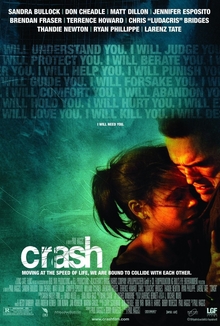 Think back on the books you love, and invariably it’s the protagonist who comes to mind. Characters are the heart and soul of our stories, and I’ve spent months and sometimes years getting to know mine. But in my systematic efforts to pin down their personalities, I sometimes sacrifice what’s most important: the element of surprise. Even when I think I know my protagonist—her pet peeve, greatest fear, secret ambition, which songs she sings in the shower, and what makes her cry—it doesn’t mean her actions should be consistent.
Think back on the books you love, and invariably it’s the protagonist who comes to mind. Characters are the heart and soul of our stories, and I’ve spent months and sometimes years getting to know mine. But in my systematic efforts to pin down their personalities, I sometimes sacrifice what’s most important: the element of surprise. Even when I think I know my protagonist—her pet peeve, greatest fear, secret ambition, which songs she sings in the shower, and what makes her cry—it doesn’t mean her actions should be consistent.
And that’s a good thing, because predictable characters are boring. Why bother to read about someone if you know exactly what she’s going to do? But if that same protagonist surprises us by doing something unexpected or “out of character,” our interest is piqued. Life is not black and white; our characters shouldn’t be either.
“Elderly people are not always craggy, wrinkled, stooped over, forgetful or wise,” writes Dani Shapiro in her book, Still Writing. “Babies aren’t always angelic, or even cute. Drunks don’t always slur their words. Characters aren’t types.” One way to avoid clichéd characters is to give them a mix of positive and negative traits–qualities that are both attractive and repellent.
In the movie Crash, for example, Matt Dillon plays an angry, racist white cop, whose actions can be as ugly as his words. Yet, when we see him at home tenderly and patiently caring for his sick father, we understand this ugly side is only part of the story.
 In one of the film’s most tension-filled scenes (spoiler alert!), Dillon’s character heroically risks his life to pull a black woman from a burning car only seconds before it explodes. The irony is, he’d abused the same woman only days before by groping her during a traffic stop. Dillon’s partner, an idealistic white cop, wants to do the right thing, and yet he ends up shooting an innocent, black man. The fact that bad people do good, and good people do bad is what makes the characters in this thought-provoking film so authentic.
In one of the film’s most tension-filled scenes (spoiler alert!), Dillon’s character heroically risks his life to pull a black woman from a burning car only seconds before it explodes. The irony is, he’d abused the same woman only days before by groping her during a traffic stop. Dillon’s partner, an idealistic white cop, wants to do the right thing, and yet he ends up shooting an innocent, black man. The fact that bad people do good, and good people do bad is what makes the characters in this thought-provoking film so authentic.
 Oxymoronic complexities create unforgettable characters. Characters like Frankenstein (a sweet monster), Boo Radley from To Kill a Mockingbird (a gentle madman), Jean Valjean in Les Miserables (an honest thief), and in real life, actor Robin Williams (the sad funny man). In contemporary YA, I couldn’t stop thinking about Keir Sarafian (a well meaning rapist) from Chris Lynch’s Inexcusable, or Marcelo Sandoval, the autistic 17-year-old protagonist of Francisco Stork’s Marcelo in the Real World. Initially, Marcelo appears isolated and incapable of relating to or understanding other people . But as we gradually come to see, it’s those other people in the story who are impaired—like Arturo, Marcelo’s high achieving, Harvard-educated, lawyer dad. Despite his intelligence, Arturo is blind when it comes to seeing the truth about the people around him. As a hypocritical, greedy, philandering father who genuinely loves his wife and kids, he too is full of incongruities.
Oxymoronic complexities create unforgettable characters. Characters like Frankenstein (a sweet monster), Boo Radley from To Kill a Mockingbird (a gentle madman), Jean Valjean in Les Miserables (an honest thief), and in real life, actor Robin Williams (the sad funny man). In contemporary YA, I couldn’t stop thinking about Keir Sarafian (a well meaning rapist) from Chris Lynch’s Inexcusable, or Marcelo Sandoval, the autistic 17-year-old protagonist of Francisco Stork’s Marcelo in the Real World. Initially, Marcelo appears isolated and incapable of relating to or understanding other people . But as we gradually come to see, it’s those other people in the story who are impaired—like Arturo, Marcelo’s high achieving, Harvard-educated, lawyer dad. Despite his intelligence, Arturo is blind when it comes to seeing the truth about the people around him. As a hypocritical, greedy, philandering father who genuinely loves his wife and kids, he too is full of incongruities.
 Character contradictions can help create empathy. When the thug reveals his vulnerability—through his fear of an abusive father or his worry about an incarcerated brother—that’s when we start to care. The superficial, shallow cheerleader can seem like a type—until she goes home to care for a handicapped sister or cancer-stricken mother.
Character contradictions can help create empathy. When the thug reveals his vulnerability—through his fear of an abusive father or his worry about an incarcerated brother—that’s when we start to care. The superficial, shallow cheerleader can seem like a type—until she goes home to care for a handicapped sister or cancer-stricken mother.
A high school student of mine wrote a story about an impoverished 15-year-old living in the projects in Detroit. His protagonist, Jamal, is an honor student and a loving son to his single, hardworking mother. But Jamal also belongs to a gang. What I feel ultimately makes his character so interesting is the juxtaposition between his positive traits and his immoral actions. In the last scene, as Jamal picks up a pistol and heads out the door for a night of thieving, drug dealing, and possibly even murder, he almost forgets the duffle bag he’s packed. Grabbing it, he mumbles to himself, “Mom always said I’d forget my head if it wasn’t attached.” This affectionate, kidlike statement stands in stark contrast to his criminal activities.
I try to focus on five essential elements when creating my characters: name, appearance, motive, history, and environment. Adding character contradictions to these categories can enhance every one.
 Names have associations and images. Would you call a jock Horace? A popular cheerleader Beulah or Gertrude? Give a shy, artistic guy the name of Spike? Probably not…unless there’s a reason to upend your reader’s expectations. Ironic names can be a hugely effective way to ignite a reader’s interest, surprise us or make us laugh.
Names have associations and images. Would you call a jock Horace? A popular cheerleader Beulah or Gertrude? Give a shy, artistic guy the name of Spike? Probably not…unless there’s a reason to upend your reader’s expectations. Ironic names can be a hugely effective way to ignite a reader’s interest, surprise us or make us laugh.
 Appearance. Clothes, hair, body type, fitness level, facial expressions, mannerisms, gestures and speech all provide clues to character. But throw in character contradictions—make that pouty blond in the mini skirt a rocket scientist—and the reader does a double take. My son’s wife wore dusty work boots under her beautiful gown at their wedding ceremony—a statement about their life as farmers.
Appearance. Clothes, hair, body type, fitness level, facial expressions, mannerisms, gestures and speech all provide clues to character. But throw in character contradictions—make that pouty blond in the mini skirt a rocket scientist—and the reader does a double take. My son’s wife wore dusty work boots under her beautiful gown at their wedding ceremony—a statement about their life as farmers.
In Silicon Valley, CEO’s of start-ups saunter down the streets dressed in grungy jeans, tee-shirts and sneakers. But their youthful appearance and slacker attire belie their astounding net worth.
Motive. What does your character want more than anything in the world? The answer is the force that moves stories forward and determines plot and character. But motives can be contradictory too, and conflicting desires create drama. When we lie to protect others, or give up something or someone we love, we are living out these contradictions. Take the classic example of Humphrey Bogart’s character, Rick, who at the end of Casablanca forces his true love, Ilsa, to leave him. Or brave Eleanor from Rainbow Rowell’s Eleanor and Park who, after moving away from the boy she loves, chooses to ignore his letters and postcards despite her breaking heart.
History. Knowing your protagonist’s history is the key to understanding her motives. So, leaking backstory into the narrative can help a character’s contradictory actions make sense. In one of my students’ stories, where a young girl is being beaten by her drunk dad, I was startled by the following line: “[she] searched his eyes for any remnants of the kind, loving father she knew.” That’s the line that captured my attention, because it made me ask, “What happened to change everything? How did a loving Dad turn into this monster?” Incongruities like these can spark our interest and cause readers to engage more actively in the text.
Environment: Our environment shapes us, no question about it. Family, friends, school, home, work and physical settings are a few of the many factors that influence character. But you can also play with environment for humorous effect. Look at old sitcoms like the Beverly Hillbillies (poor, backwoods family moves to Beverly Hills) or Green Acres (city slickers move to a rural country farm). Or you can use environment as a vehicle for exploring serious, thought-provoking issues like in the Netflix series, Orange Is the New Black (upper middle class white girl goes to a federal prison).
Regardless of whether you’re writing about oxymoronic characters like rich hicks or well-heeled convicts, environmental mismatches can provide story drama that results in valuable new insights for readers.
It’s only human nature to make assumptions about people based on what we see, but when we take the time to pair unlikely elements, the rewards can be rich indeed. Character contradictions are all around us. Notice them, appreciate their oxymoronic complexity, and incorporate them into the people you create on the page. Your stories will be more authentic for it.
